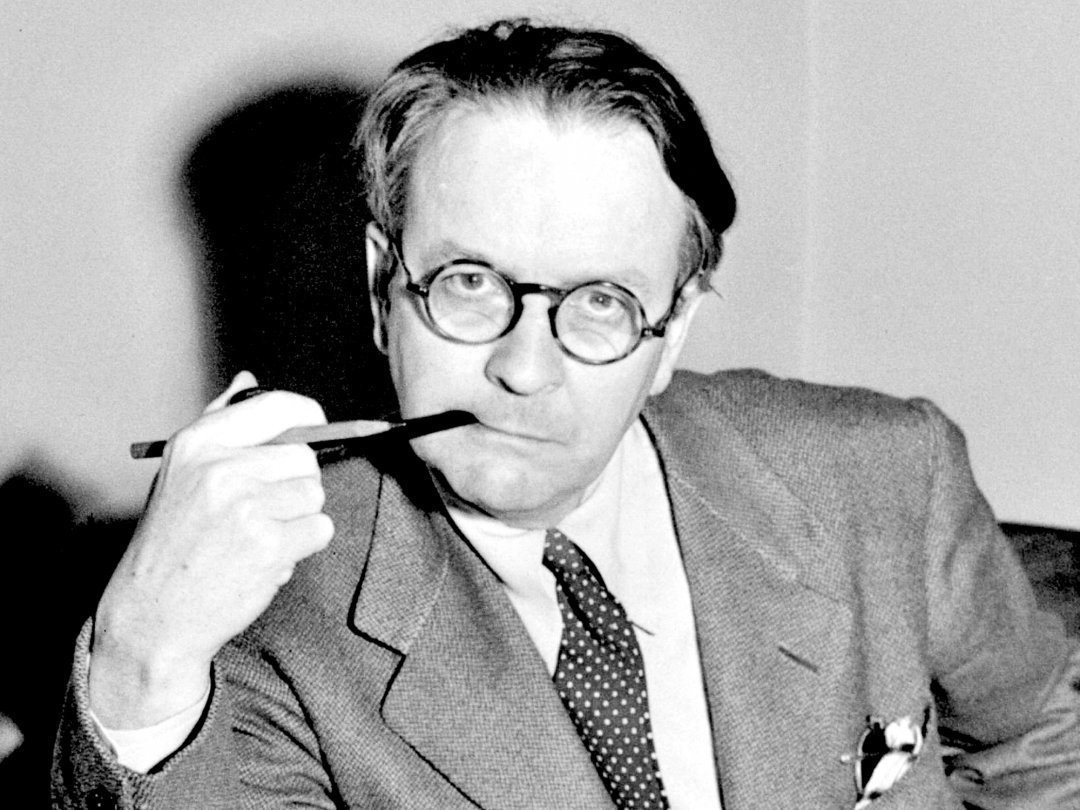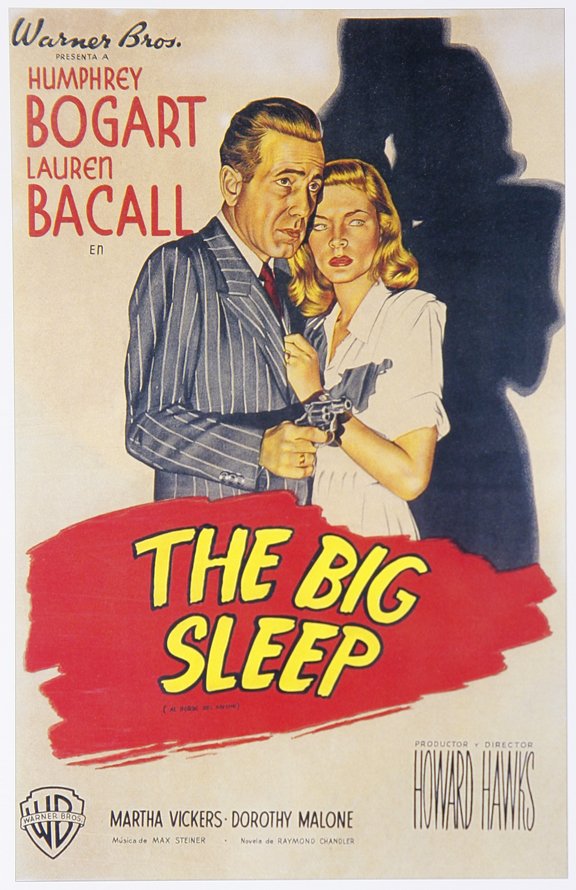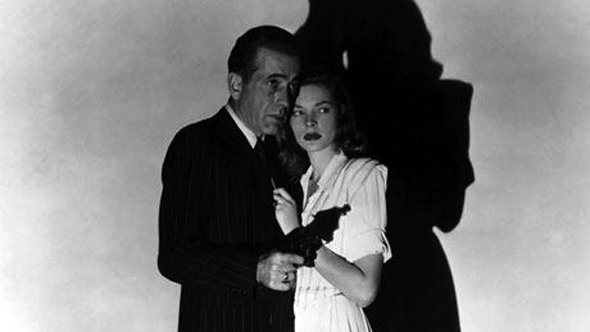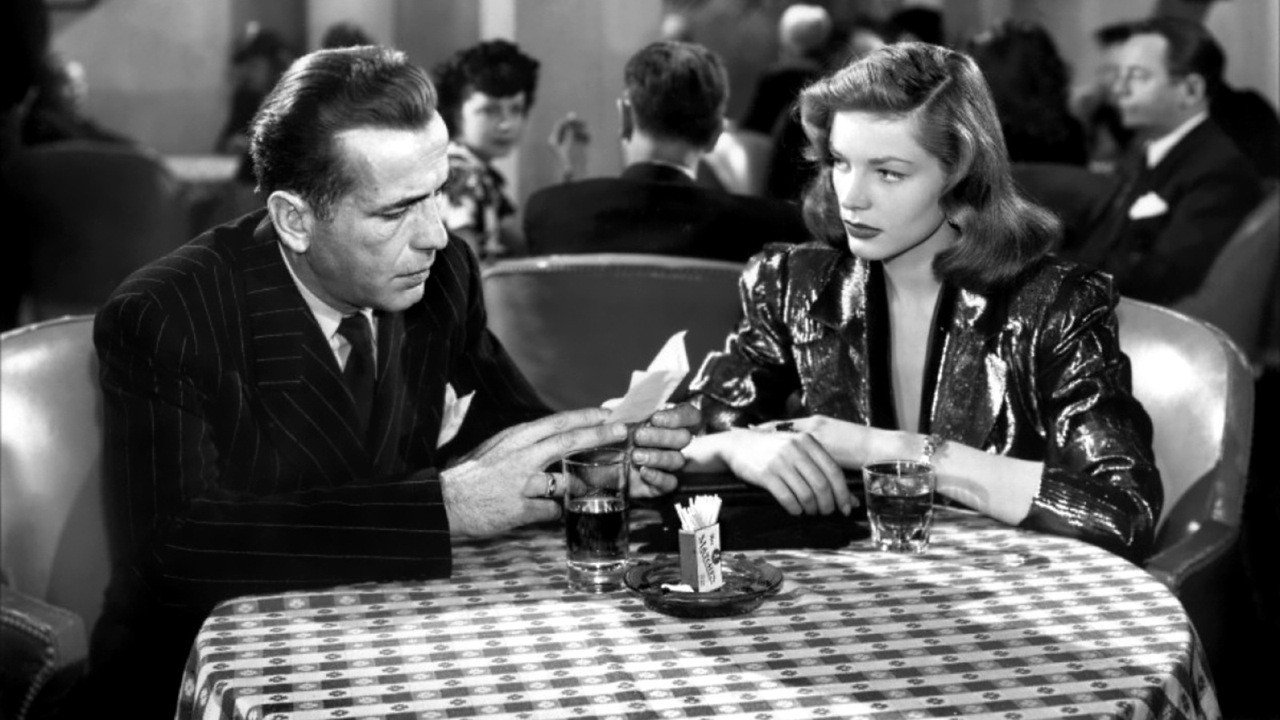Literature on Film | Part 2 | The Endearing Legacy of The Big Sleep
Speaking very generally, the giants of American literature have never fared well in Hollywood.
From Baz Luhrmann’s showy but ultimately quite empty take on The Great Gatsby, to James Franco’s God-Bless-You-For-Trying-But-Please-Stop attempts to bring William Faulkner and Cormac McCarthy to the screen, adaptations of the quintessential American novel have always struggled. This is perhaps fitting, as a number of key American authors had similarly bad luck actually working in Hollywood. Between the 20s and the 40s a slew of authors made their way to Hollywood to try and make a quick buck in the then burgeoning movie industry. While few original, or indeed great movies, came out of this, a lot of great stories emerged. Some of these are literary, actual novels, such as Fitzgerald’s final (uncompleted) novel, The Last Tycoon, which offers a wry take on Hollywood decadence, but most are anecdotal. Though there are plenty of tales of debauchery and drunkenness by the literary elite in the Hollywood hills, perhaps the best story about a literary man in Hollywood is of William Faulkner attempting one of his first screenplays, an adaptation of a detective novel. Faulkner, along with co-scripters Leigh Breckett and Jules Furthman, couldn’t work out who had killed a minor character, a chauffer, so he got into contact with the author, who shouted him down and told him to read the book more carefully. The story goes that about an hour later a phone call came through, somebody looking for Mr. Faulkner. The future noble prize winner picked up the phone and Raymond Chandler, perhaps having followed his own advice and gone through his debut novel, sheepishly told him that he had no idea who killed the chauffer.

Given how blasé he seemed to appear in his attitude toward plot, it is perhaps no surprise to learn that Raymond Chandler’s literary career started with a similar randomness. An oil man by trade, he picked up a cheap pulp detective magazine the day he lost his job and decided that he could do one better. After about six years of writing short stories for magazines, Chandler’s first novel, The Big Sleep, was published in 1939. An instant best-seller, the plot is infamously convoluted. Phillip Marlowe, a Los Angeles Private Investigator, is hired by the retired General Sternwood to work out who has been blackmailing his wayward daughter Carmen, whilst unbeknownst to the general, his other daughter, Vivian, implores Marlowe to help her find her AWOL fiancé, a Irish gun-runner called Rusty Regan, whom she suspects is “sleeping the big sleep”, but who might just be shacking up with Mona Mars, the wife of casino owner Eddie, who wonders aloud to Marlowe if Arthur Geiger, a pornographer, is trying to cheat him out of a gambling debt. It’s perhaps unsurprising to find out that the novel is really a bastardisation of two popular stories that Chandler had written before, “The Killer in the Rain” and “The Curtain”, awkwardly married together. I’ve never been to Los Angeles, but it’s often described as a very disorientating city, because it’s seems to sprawl in every direction, and apparently it lacks a centre. For this reason, I suspect The Big Sleep is a quintessential Los Angeles novel. The plot never reaches a satisfactory conclusion, with so many disparate elements, but you never seem to care, purely because Chandler’s control of language is dazzling. In an essay he wrote about the detective novel, Chandler once claimed that the supposed masters of the form, the Agatha Christies, the Arthur Conan Doyles and the EC Bentleys, have insured that the crime genre does “dullness” better than any other genre. Chandler argued that most authors where too concerned about plot, and this took the reader out of book, because it meant that they started to work out how it would end, instead of focusing on what was on the page. Chandler, therefore, spent more time developing atmosphere and character than he did plot. This is said to have raised the stature of detective novels to that pernicious height of literary fiction.

Given that the novel’s stature is far more based on atmosphere and character than it is plot, it is a genuinely bold and strange move that Howard Hawks decided to change very little when he adapted the book for screen just six years after it came out. Of the two major changes, the removal of a homosexual relationship and keeping Vivian Sternwood clothed in a scene written nude, both where done largely because of the very strict decency laws in Hollywood at the time. Hawks made what was a fairly brave and indeed successful attempt to replicate Chandler’s prose onscreen. A hallmark of detective fiction, or even hardboiled fiction, is the staccato sentence, something Chandler helped to cement. I really can’t stress enough how good Chandler’s use of language is. Chandler’s short sentences are a little bit like Hemingway on diet pills. A beautiful woman could “make a bishop kick a hole in a stained glass window”, from a basement, rain sounds like “somebody else’s rain”, blood re-circulating into a recently cuffed hand feels like “a prospective tenant reviewing an apartment”, a nice neighbourhood is “a good place to have bad habits in”. The short bursts of sentences make it a very quick read and ensures that almost every page has line that makes you grin at its sheer intelligence.
Hawks made the very, very wise decision to avoid having any form of voice-over in the film, and instead relied on the cinematography of Sidney Hicox to transfer the prose to screen. Because Chandler’s prose moves at such a snappy pace, it feels at times that the reader is being literally dragged through the narrative and only getting a fleeting glimpse of what’s going past them. Hicox is able to replicate this on screen with a mixture of quick edits that instantly bring to mind Chandler’s novel. It’s not the over caffeinated adolescent freneticism of the modern action film, it’s far more orchestrated than that. If Chandler’s prose manages to be a paradoxical combination of being over the top yet beautifully minimal than Hicox’s camera work manages to be cautious yet urgent. Watch the opening scene.
[youtube id=”pPQOTvkFA1o” align=”center” autoplay=”no” maxwidth=”750"]
The camera moves, as though surveying, like Marlowe is, its environment, and even though there’s quite a lot going on visually, on the set, it never lingers or stops on anything. Dialogue scenes are shot with similar intensity, with props being used create a sense of nervous movement and bring a sense of kineticism to the scene, without actually having to change perspectives much. The film was entirely shot on sound stages, which gives it an intimacy that clash with the wide-scoped desolate, and often Scandinavian, wastes that feature in a lot of the today’s crime dramas. This intimacy occasionally moves into claustrophobia, which only adds to the evocation of Chandler’s prose. Chandler writes in an incredibly stylized manner, and almost completely lacks realism, so it’s downright appropriate that the film was completely shot the way it was.

If Chandler’s prose gave birth to the modern hard boiled genre, then the film certainly cemented, if not downright created what is known as film noir. Over playing shadows, bathing characters in moody lighting and giving the film a smokey aesthetic that hints that danger is omniscient, perhaps the only downside to the film, and indeed the novel, is that it has become so ingrained in popular culture that it almost runs the risk of becoming cliché. In spite of this, book and film manage to retain their originality, largely owing to the amount of dedication put into them. The litmus test for this is perhaps the fact that fedoras don’t end up looking completely ridiculous.
Unlike Lisbeth Slander, Harry Hole or Lincoln Rhyme, we never actually find out very much about Chandler’s Phillip Marlowe. In the (iconic) opening paragraph Marlowe states
“I was wearing my powder-blue suit, with dark blue shirt, tie and display handkerchief, black brogues, black wool socks with dark blue clocks on them. I was neat, clean, shaved and sober, and I didn’t care who knew it. I was everything the well-dressed private detective ought to be.”
That’s literally the only framing we get for Marlowe before we get plunged into his world. Absent from Marlowe is any childhood trauma, and demons that need to be exercised or indeed any iron sense of morality. The detective business is “no game for knights”, and Marlowe moves from clue to clue with steely conviction, rarely trying to impose personal morality on the case. Marlowe realises that the world is random and cruel, and he’s willing to accept that so long as it’s never boring. Less meditating on how something should be done, and more barrelling on to the next task. Humphrey Bogart, in what is generally considered to be his breakout role, is inspired casting. Bogart came from a style of acting that started with Cagney and seemed to end, roughly, with early De Niro (or maybe, very early Rourke) that was remarkably un-showy. His craggy features, almost weathered stare nearly tells the story by itself. Bogart’s slightly hunched stature, his quiet way of speaking and the fact that he appears in profile quite a bit, suggests that he finds the whole acting thing a little bit embarrassing, and the whole film is a masterclass in subtle, understated acting. What Bogart is doing is completely performative, obviously, but he never comes across as being as overtly preforming as a modern actor. Certainly, he’s not as pretty either. It’s difficult to imagine any star today, the Di Caprio’s, the Cumberbatch’s, the Gyllenhaal’s, the Gosling’s, pulling off the role as effectively. Without spoiling too much, Hollywood decorum meant that Vivian Sternwood’s role had to be reduced and revised quite a bit for the film, and this means that Lauren Bacall gets much less to do than she deserves in the film. In spite of this, her performance did cement what came to be known as a femme fatale. Like Bogart’s, it is an understated performance that relies on subtle visual tics and a very deliberate way of conveying the dialogue.

Given that Bogart and Bacall ended up marrying not long after making the film, the natural chemistry that they have shines through, and adds a great deal of style to a film that is already impossibly stylish. That the film can be incredibly stylish without being very showy is perfect, because it captures the essence of the novel. Both are classic examples of style over substance. This might make them seem superficial, but when handled with such aplomb, who cares? Chandler’s novel has gone on to influence not only countless crime writers, like Denis Lehane, Jo Nesbo, Jeffery Deaver and Elmore Leonard, but writers from all walks of genre. Elements of Chandler’s taut prose can be seen in the science fiction works of William Gibson, and his fidelity to character over plot is a tradition that horror writers like Stephen King and Dean Koontz occasionally adhere to also. Literary authors owe a debt to Chandler as well. Albert Camus borrowed his sentence structure for his existential tragi-comedy The Stranger, Thomas Pynchon infuses many of Chandler’s tropes with marijuana and shoulder length hair in Inherent Vice, Bret Easton Ellis has effectively spent a career mediating on style over substance, and Michael Chabon’s The Yiddish Policeman’s Union was effectively a long love letter to Chandler’s body of works. Similarly, Nicholas Windng Refn’s neon soaked Drive, David Lynch’s nightmarish Blue Velvet, the Coen Brothers’ freewheeling Big Lebowski, Roman Polanski’s sublime Chinatown and Frank Miller’s dumb but fun Sin City all riff on Hawks’ film. Marlowe would appear on screen again, portrayed by Elliot Gould in 1973s The Long Goodbye (directed by Robert Altman) and by Robert Mitchum in Farewell My Lovely (1975, directed by Dick Richards) and a remake of The Big Sleep (1978, directed by Michael Winner). These versions, though more faithful to the novel, update the story, change the setting and get rid of the black and white. This removes much of what made the original a great film as well as a great adaptation, and these takes on Chandler’s novels have languished in semi-obscurity. In terms of transferring a novel to screen whilst maintaining the essence of what made it great in the first place, 1946’s The Big Sleep remains the gold standard.

